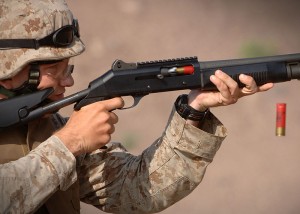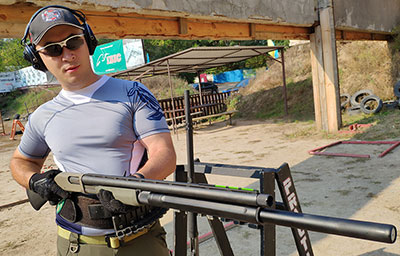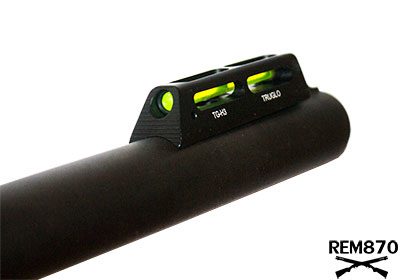Semi-Automatic Shotgun with Magazine Tube
A tubular magazine usually runs under the barrel allowing rounds to be loaded tip to primer. This works well for shotgun shells, because there is not a pointed protrusion that can trigger the primer on a shell. The magazine load is limited by design particularly on shotguns because of waterfowl laws and other local, state and federal laws. Usually you can load four in the tube and have one chambered for a total of five. However, some believe that leaving five rounds loaded for extended periods may wear out the magazine’s spring, so some only leave three in the tube to reduce stress. This is only conjecture however, but it does appear that springs can wear out from use and not just because they are compressed for long periods.

Semi-Automatic Shotgun with Magazine Tube
Leaving five shells in the weapon is also a safety issue so it is never recommended you store a weapon loaded and if you feel you will need the weapon soon only keep four in the tube and then chamber a round when ready to fire and you can then top off.
On a semi-automatic shotgun with a tube magazine the barrel and bolt, recoil together and then the bolt stays back, to allow the shell to be ejected and then the bolt moves forward to chamber another round. No pumping or other action is required by the shooter. The trigger is pulled one round is fired; pull the trigger again another round fires. Rounds are fired downrange as fast as you can pull the trigger.
Most semi-automatics use the force of the gas created by the ignition of the propellant to cycle the rounds into the chamber. There is debate on which is a better firearm, pump action versus semi-automatic. Each has their own advantages and disadvantages and much depends on what you are accustomed to shooting. Either weapon is ideal for home defense, and hunting. Semi-automatics are used for bird hunting when you have multiple targets however, you are restricted to three shots when shooting at migratory birds and you are required to have a plug inserted that restricts the number of rounds you can load.
Some semi-automatic use recoil to cycle rounds. The backward thrust causes the bolt to unlock moving to the rear allowing the spent shell to eject. The recoil tension then allows the bolt to move forward to chamber a round. On gas-operated weapons, you have to make adjustments occasionally.
Low recoil loads are a problem in some semi-automatic shotguns because the cycling action requires a certain amount of energy be generated to chamber a round. Therefore, if you reload your own shells you must carefully consider your charge. Load the shotgun by “thumbing” or pushing a shell past the tang, until full then you can chamber a round and top off. The weapon is now ready to fire.
Anyone that has been in a firefight knows to top off his or her weapon. Fire then load before you fire the weapon empty because once empty then you have to feed rounds into the tube, which will take time you may not have. Many firearm courses in the past actually taught a shooter to fire until empty and then reload under cover. However, now the emphasis is on “tactical reload” fire one load one.
Related Post:




